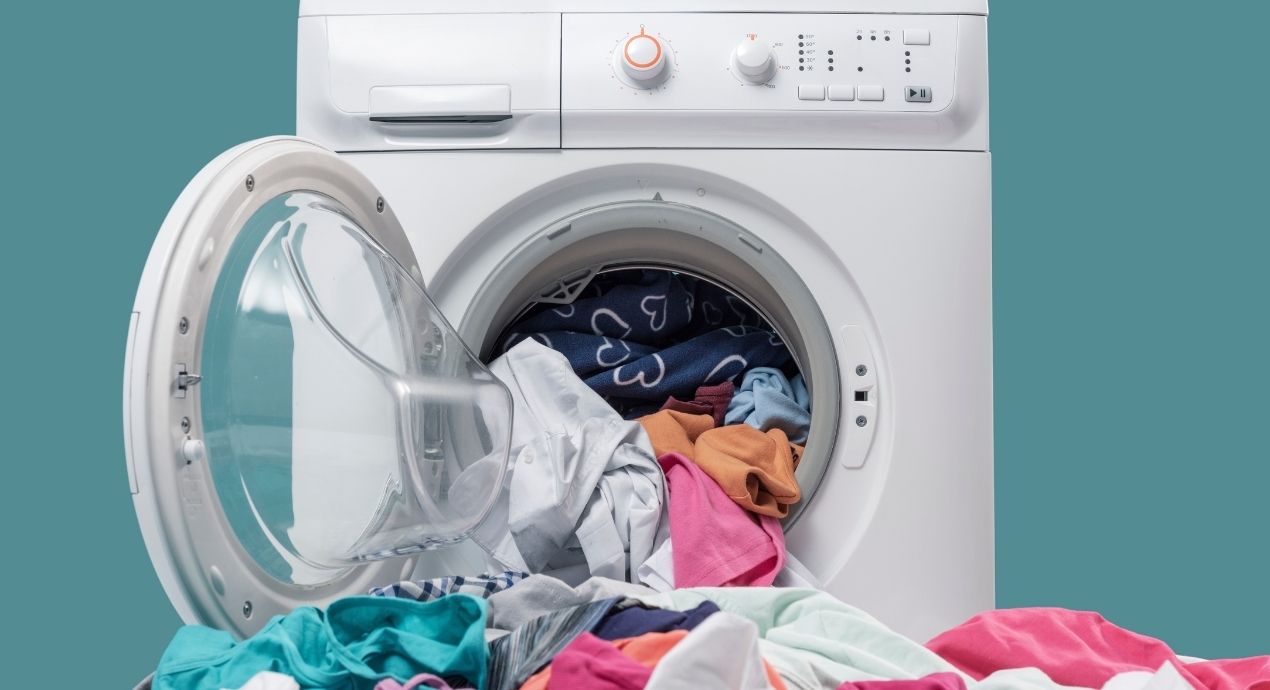
Contemplating coverage?
Subscribe to receive our emails & get
$200 off!
Have questions?
Call us: (833) 544-8273


Written By Allaire Conte
Washing machines take a beating. With every cycle, they’re exposed to great volumes of water, harsh detergent, and tremendous mechanical force. With frequent use, a malfunction is virtually inevitable.
Few homeowners are knowledgeable or comfortable enough to fix a washing machine themselves. Sometimes that’s for the best, as washing machine electrical problems are best left to the experts. But many people would be surprised at the problems they can solve on their own with a washing machine troubleshooting plan.
If you’re dealing with a washing machine not working properly, this is the post for you. We’ll explore how to troubleshoot washing machine problems so you can wash another load of clothes without the help—and expense—of a professional repairperson.
There's a reason Liberty Home Guard was rated the #1 Home Warranty
Service by U.S. News and World Report for 2021, 2022, 2023, and 2024. Check out our services.
A first step when troubleshooting any appliance is to confirm that it’s drawing power. If your washing machine isn’t showing any signs of life, check that the machine is plugged in. You can also test the outlet with another appliance, such as a phone charger. If the outlet is dead, try to reset the circuit at the breaker.
If your washing machine powered down in the middle of a cycle, it may have shut down from being overloaded. Remove several garments and reset the washing machine by unplugging it and plugging it back in.
If your washer powers on but won’t run, there could be a problem with the lid switch. This is a small device under the lid that keeps the machine from operating when the lid is open. Check the switch to confirm it isn’t damaged. If you press the switch and it doesn’t click, it may need to be replaced.
Though they seem like opposite problems, leaking water and water that fails to drain have similar causes. If you notice water leaking from your washing machine, first try to determine where the water is coming from. If water is leaking from the front of a front-loading machine, there’s likely a faulty door seal. If the seal has a buildup of soap scum or minerals, clean it off. If the door seal has visible signs of deterioration, replace it.
If water is leaking from under or behind the machine, or if your machine isn’t draining, check the machine’s different fittings. Inspect the hoses for signs of wear. It’s especially important to check joints, gaskets, and valves—that is, places where the hoses connect. You can also disconnect your drain hose to check for any clogs.
Finally, it’s possible that a leak could be due to using too much detergent. This will often be obvious because you’ll notice the excessive suds. In general, most people use more detergent than is necessary.
A washing machine that doesn’t spin properly could be due to a faulty lid switch, as described above. If your washer isn’t direct-drive, the problem could be a broken belt. You can open your washer and look inside to see if a belt appears damaged.
This problem can also be caused by a malfunctioning motor. Sometimes the motor overheats and needs a cooldown period. Other times, the motor won’t function until it is repaired. In that case, you’ll want to contact a professional.
A little shaking is just the washing machine doing its job, but if you feel like your machine is shaking too forcefully, there could be a minor issue. Often, the solution is to relevel the washer. Place a level on top of the washer. If it’s off, adjust the feet as needed.
A shaking washer can also be due to an unbalanced load. Pause the cycle and readjust the garments inside so the weight is distributed evenly.
A common problem with washing machines is the presence of an unpleasant odor. This is most often caused by mildew and biofilm that accumulate because of the constant moisture. You can remedy this by scrubbing visible signs of mildew. You can also run a light load of spare towels with hot water and well diluted vinegar or bleach. On occasion, mildew proliferates in the machine’s drain filter. Clean this once a month or so to avoid any mold growth.
If your washer troubles aren’t solved with an easy fix, there’s no need to pay for a high washing machine repair cost out of pocket. With Liberty Home Guard, you can get a washing machine extended warranty to affordably service, repair, and replace your machine. Learn more about our plans by calling (866)-748-2399 or requesting a free quote through our website.
Stay Ahead of Potential
Home Mishaps!
Subscribe to our Liberty Home Guard Newsletter and gain access to exclusive content that ensures your peace of mind.